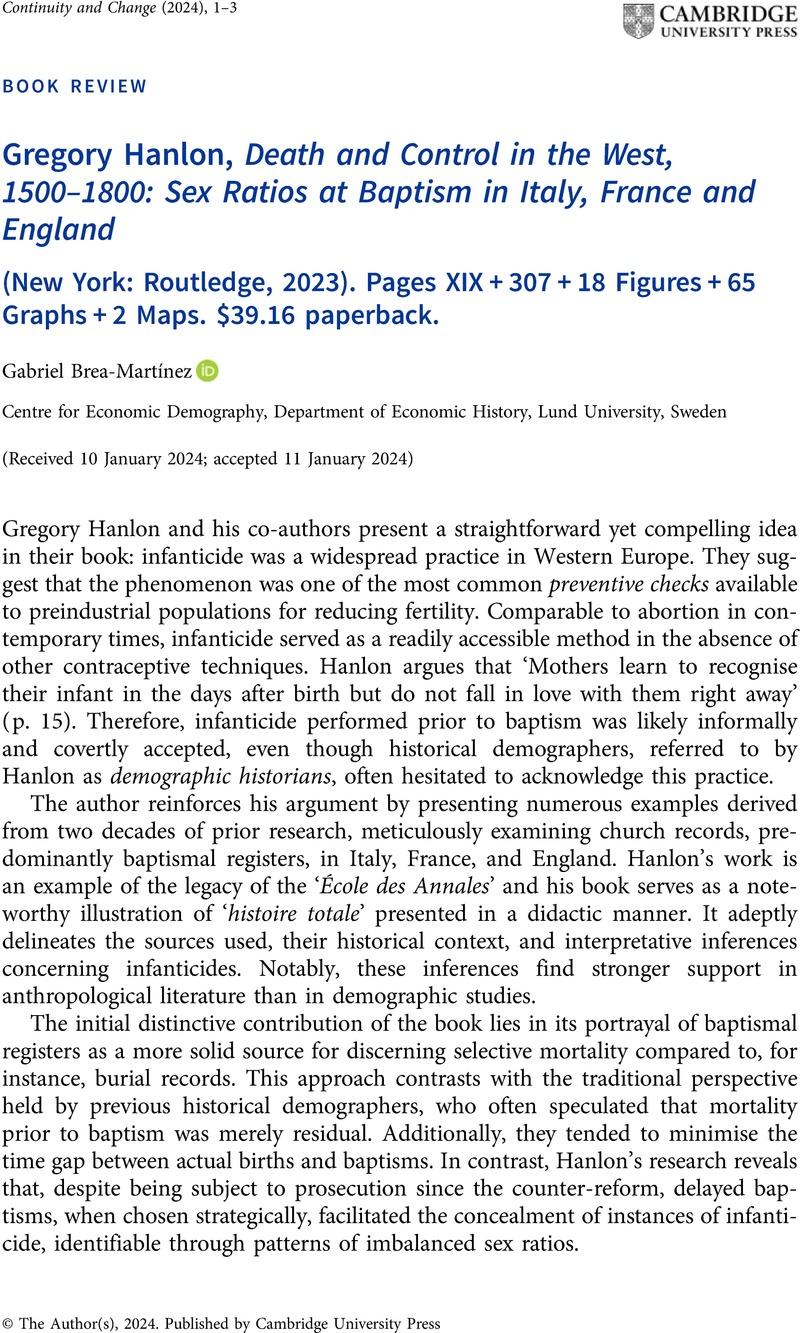No CrossRef data available.
Article contents
Gregory Hanlon, Death and Control in the West, 1500–1800: Sex Ratios at Baptism in Italy, France and England (New York: Routledge, 2023). Pages XIX + 307 + 18 Figures + 65 Graphs + 2 Maps. $39.16 paperback.
Review products
Gregory Hanlon, Death and Control in the West, 1500–1800: Sex Ratios at Baptism in Italy, France and England (New York: Routledge, 2023). Pages XIX + 307 + 18 Figures + 65 Graphs + 2 Maps. $39.16 paperback.
Published online by Cambridge University Press: 12 March 2024
Abstract
An abstract is not available for this content so a preview has been provided. Please use the Get access link above for information on how to access this content.

- Type
- Book Review
- Information
- Copyright
- Copyright © The Author(s), 2024. Published by Cambridge University Press



